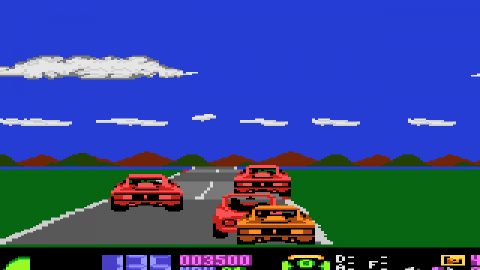Isleofsancroy
Banned
The Atari 7800 is a highly underrated system that I strongly recommend, especially now that you can get one for a reasonable price in most of the countries it was available in, and it's awesome software library being a mixture of 80's arcade goodness, along with game design commonly found on computers. Overall it's a great representation of the gaming industry of the time.
Some history, the Atari 7800 was originally supposed to release proper in 1984, and was test launched earlier that year in California and Texas, Texas being invite only. But there was a problem during the sale of Atari assets to the new Atari Corporation, primarily GCC the creator of the 7800, was demanding royalties holding things up. Even though Atari engineers did work with them on the hardware GCC basically had ownership and so held all the cards. Eventually a deal was made and a lot of these assets were moved over to Atari Corp. The 7800 itself was a separate deal from all the other Atari assets acquired by Atari Corp, and CEO Jack T had to pay for the console separately from the 2600 and the 5200. Despite the myths of Jack not wanting to have anything to do with game consoles, he decided to go ahead and pay what was owed, and even payed GCC extra money to finish developing the contracted software they were originally supposed to release for the 7800 in 1984l, even going so far as to having banners for the 7800 at the 1985 CES along with the 2600 and 5200 on physical display, both of which Atari Corp decided to manufacture new cartridges for, and release new games that were not previously available pre-asset sale, including the popular Lucas Arts classic, Rescue on Fractulus for the 5200.
Everybody knows that Nintendo had some unpopular policies that repelled western developers and even in some cases, Japanese developers from releasing software on their console, the most infamous of which was the console lock-out, a policy that made it so that you could not release NES software on a competitors game machine for 2-3 years, and while a rumor it is said that in some specific cases, a deal was made so that for some software couldn't EVER release on other systems. While many people don't know this, most people that are likely to post on a gaming forum are likely privy to this information.
What you likely didn't know however, was how early this policy was in place. Believe it or not it was in place not only before the NES actually released in the US proper in 1986, but even before it was market tested in 1985. Michael Katz, hired to be in charge of Atari's games and consoles division with the title Executive Vice President, was supposed to gather software titles for the 7800 as it was being readied for launch. It turned out that a lot of western developers were not interested in developing games for the 7800 because it, along with every other competing manufacturer during that time were underspecced. In 1985, the Atari Corp's own Atari ST, and the Commodore Amiga were out among other sophisticated 16-bit and later 32-bit computers. This honestly was not too surprising overall, but what was a surprise though is that when Katz had tried to broker deals with Japanese software developers most of them were locked up or required high payouts. Atari Corp was a new company and wouldn't have the cash to invest in payouts until late 1986 at the earliest, and had to spend a large amount of money repairing relationships with retailers, marketing the 7800 and the ST computer, while also investing in software for both.
In the end, Katz had to resort to creating a 'short team' and a 'long-team' at Atari, the Long-team would have longer development cycles for games, while the short-team would have a shorter dev cycle, or license ip to bring to the 7800 from various software developers. For third-party, because western developers lacked interest in developing for weak hardware, and Nintendo had gobbled up nearly all the relevant Japanese developers, they could only broker deals with a handful of computer software houses that didn't mind developing software on console hardware. The strategy was to try and create a structure that would allow for games to be released as close together as possible to prevent game droughts, though in the end this would only work half the time.
Atari, as well as competitor Sega with their Mark III (Master System) console would have problems getting into retail stores also due to Nintendo, which had brokered contracts with several of them to take up most of the isles, or in certain cases be the only system sold. This is why many people had no clue either of these two consoles existed, if they did they were either reading the newspaper columns in the early years or they were keeping tabs on the industry through niche sources or magazines. While Atari would greatly improve their retail footprint, including buying out a retail company and creating branded stores (which would backfire and lose them tons of money on the computer end) they could never match Nintendo's much larger retail footprint, an advantage they had from the start and only grew with time.
One thing to remember is Nintendo had already dominated Japan and had come to the US already having a manufacturing network, which it added on to. This allowed Nintendo to produce a astronomical amount of consoles in comparison to Atari or Sega. The retailer contracts they brokered allowed them to stuff software and hardware on retailer shelves and this was done before launch. It didn't help they had more cash than either for advertising too.
In order to try and explain why Nintendo's stock volume and early high sales were such a shock to analysts in the industry, the industry had a crash that was already in recovery despite common myth. Coleco, the company behind the popular Colecovision console, had survived the crash and saw a slight uptick in Colecovision sales, however the profits were not considered significant, so when Coleco who had tried and failed to salvage their Adam computer, which bombed astronomically in the marketplace, lost an astronomical amount of money due to said Adam computer, but saw a massive surge in profits in the toy industry, they decided that they would drop out of electronics entirely missing the chance of having the gaming industry to itself. Despite this several companies were considering jumping in, one of which had released a machine that costed nearly $3000 thinking a computer laserdisc machine would be amazing enough to sell at that price. Software companies were slowly trickling back to the 2600 as the year went on. Later that year Atari Corp announced they had sold 1 million consoles in 1985, which led to Atari Corp to ponder whether they should refresh the aging 2600 platform, which they would eventually do..
Later industry analysts, including Atari's own research team, estimated that Atari could manufacture a set amount of 7800's and 2600 Jr's by the end of 1986. This would follow with sales between 1-2 million units by the end of 1987 and 3-5 million by the end of 1988, with the competition selling along these same estimates. By 1988 the industry was expected to see a rebound in profits, the only part the analysts got right.
Of course, things didn't work out that way, Nintendo already had a major manufacturing and distribution network from Japan, which they added on to after deciding to release their system in the USA and onward with plenty of cash to do so. Sega was the only competitor that sold within the framework that the analysts expected, but Nintendo's network and retail footprint had completely forced Atari to rethink about going for the number one title. Atari sold out every single console that they were able to manufacture in 1986, the problem was the amount of hardware that Atari sold in 1986, was only a bit over 100,000, plus what was purchased during the 1984 testing phase gave them a total estimated 130,000 to 140,000 units sold, while Sega sold 125,000 with a surplus on shelves. Meanwhile, Nintendo had sold over 800,000 units and the holiday season was only half way finished, they would ship over 1 million to retailers by the end of 1986 and sell through that shortly by January,
Reevaluating, Atari Corp decided that chasing from behind like what Sega and partner Tonka were considering was likely an expensive and pointless endeavor. Atari had already concluded that between their retailer disadvantages and their limited capability to restock software and hardware, that it was not possible to actually win the race against Nintendo, and instead decided to switch to a profit model. The 7800 was already cheaper than the competition and made money per sale, so they decided to go for a tiered system. Atari had positioned the 2600 jr. as an entry level system from the start and decided to go all in on that idea. Now, they needed a third-tier. The new refreshes (XE and XL) of the popular Atari 400 and 800 computers weren't doing so hot, so it was decided to take the excess parts and repackage the base 65XE computer into a console shell, creating the XE Game system. This was positioned as the expensive top tier console because of its unique and large computer library containing software not commonly seen on home consoles, and the ability to transform the console into a XE computer itself. Of course, the 7800 was in reality graphically stronger than the XE game system, but the XE held up on its own. It was a successful console commercially but I'll talk about that one in a different thread as there's a lot of details to go over.
At this point Atari had finalized their game plan, Entry-tier pricing: 2600 Jr, Mid-tier pricing: 7800, High-tier pricing: XE game system. The idea was to make the best games they can, throw jabs at the competition to grab as many dissenters as possible, while making the most of their existing software partnerships and retail presence with the goal of selling software and hardware at a profit all the way until all 3 products were eventually discontinued, and it worked. Not only was the 2600 jr still a big seller, selling more than the 7800 and Sega's machine in the US, but the XE game system sold out in stores, every unit that Atari could produce in time for the 1987 holiday season was sold, and it would continue to sell well in 1988, although it would be more popular in Europe, while the 7800 would have been more popular in the US comparatively.
Moving on to the games now.
The result of Atari's partnerships and advanced hardware capabilities created a library that contained a mixture of computer games, arcade games, and unique titles, making the Atari 7800 an underrated and unique console. While it was more powerful than the competition, the mindshare and retail domination of the NES had made tile-based scrolling action games, platformers being the most common, the titles that appealed to the general public. Most consumers that brought the NES were parents of children or were coming off of the 2600 and not so much the Colecovision, Intellivision, or home computers. So the general public were wowed by games that followed the tile-scrolling framework, and there were many many many games released with that framework on the NES.
In terms of hardware capabilities in general,
Atari 7800>Sega Master System>Nintendo Entertainment System>Atari XE Game System
In terms of tile-based scrolling games specifically,
Sega Master System>Nintendo Entertainment System>Atari 7800>Atari XE Game System
For tile-based scrolling games, the 7800 wasn't specifically build for them and the Atari 8-bit computer line, which the XE Game System was based on, did. However, due to raw power the 7800 can surpass the XE through software on tile-based scrolling games, and this also applies for the first couple of 'generations' of the NES, however with the NES's enhancements in later games, it would gain a major advantage for this specific style of software.


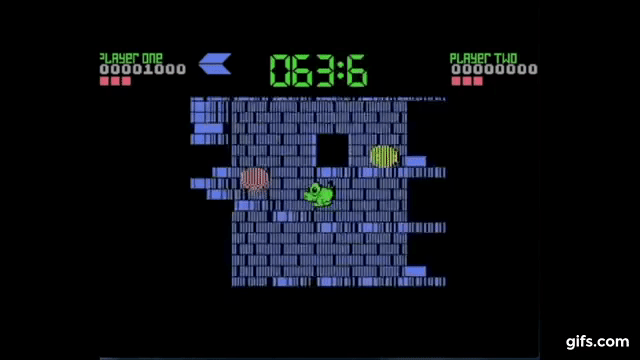
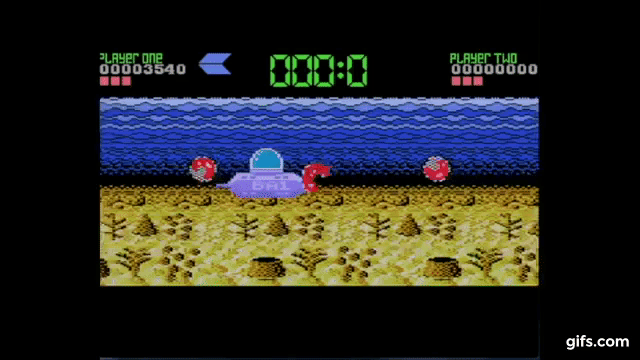
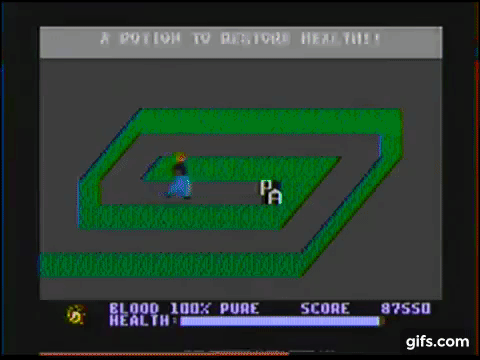

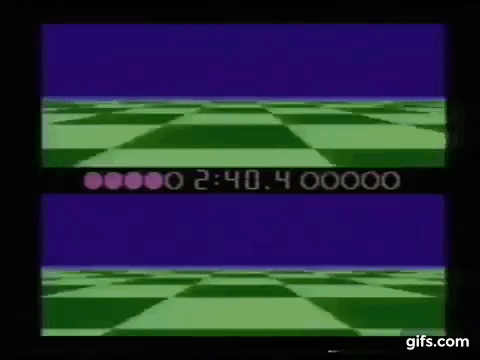
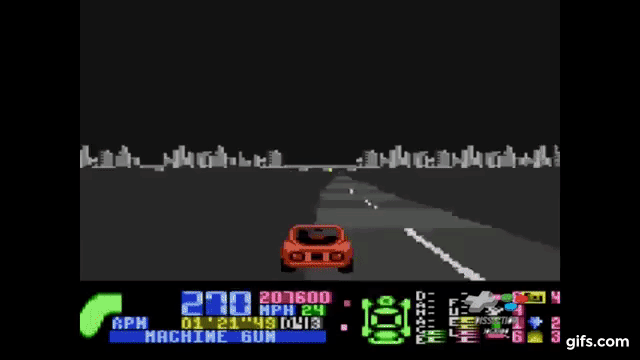
The 7800 had an amazing mixture of software from the 3 core industries of gaming, Console-Arcade-Computers. You got a taste of each without a heavy focus on just one style. Atari also released a bunch of cool originals, here are some of the games I would recommend as the library is filled with gems.
In no specific order
Arcade
Computer
Original
Sport
and with over 100 prototypes and homebrews that you should also consider. The homebrew scene is very active and new games come out pretty much every year.
Assuming you bothered to read the wall of text at the start of the thread, the 7800 is a great system to collect for with fun games, just a victim of unfortunate circumstance and unforeseen market conditions. If Nintendo hadn't already had a console out in japan giving it such a major advantage when they came to the US, or if Sega was the only competitor maybe things would have been different, but you still got long-term support, you still got great software, you still had Atari selling software and hardware at a profit, so distant from the NES or not it did it's job and helped revive the brand along with the XE system and the ST, depending on your country. Strangely, the ST line would end up helping destroy the brand as the ST line evolved years later ironically.
To bad that ST console never came out, but technology was advancing so fast they went from that to the Panther then rapidly to the Jaguar in a 3 year period so can't really blame them, but having easy access to all those games the ST and Amiga shared and ST exclusives would have been awesome. Commodore did release a console though, in fact they released two, and they were not very well executed...
But back to Atari, I recommend people take a look at the 7800 and recommend buying one to play its stellar lineup of games, especially since they're cheap and you no longer have to worry about waiting in game droughts for releases like an N64, unlike back in the day.


Some history, the Atari 7800 was originally supposed to release proper in 1984, and was test launched earlier that year in California and Texas, Texas being invite only. But there was a problem during the sale of Atari assets to the new Atari Corporation, primarily GCC the creator of the 7800, was demanding royalties holding things up. Even though Atari engineers did work with them on the hardware GCC basically had ownership and so held all the cards. Eventually a deal was made and a lot of these assets were moved over to Atari Corp. The 7800 itself was a separate deal from all the other Atari assets acquired by Atari Corp, and CEO Jack T had to pay for the console separately from the 2600 and the 5200. Despite the myths of Jack not wanting to have anything to do with game consoles, he decided to go ahead and pay what was owed, and even payed GCC extra money to finish developing the contracted software they were originally supposed to release for the 7800 in 1984l, even going so far as to having banners for the 7800 at the 1985 CES along with the 2600 and 5200 on physical display, both of which Atari Corp decided to manufacture new cartridges for, and release new games that were not previously available pre-asset sale, including the popular Lucas Arts classic, Rescue on Fractulus for the 5200.
Everybody knows that Nintendo had some unpopular policies that repelled western developers and even in some cases, Japanese developers from releasing software on their console, the most infamous of which was the console lock-out, a policy that made it so that you could not release NES software on a competitors game machine for 2-3 years, and while a rumor it is said that in some specific cases, a deal was made so that for some software couldn't EVER release on other systems. While many people don't know this, most people that are likely to post on a gaming forum are likely privy to this information.
What you likely didn't know however, was how early this policy was in place. Believe it or not it was in place not only before the NES actually released in the US proper in 1986, but even before it was market tested in 1985. Michael Katz, hired to be in charge of Atari's games and consoles division with the title Executive Vice President, was supposed to gather software titles for the 7800 as it was being readied for launch. It turned out that a lot of western developers were not interested in developing games for the 7800 because it, along with every other competing manufacturer during that time were underspecced. In 1985, the Atari Corp's own Atari ST, and the Commodore Amiga were out among other sophisticated 16-bit and later 32-bit computers. This honestly was not too surprising overall, but what was a surprise though is that when Katz had tried to broker deals with Japanese software developers most of them were locked up or required high payouts. Atari Corp was a new company and wouldn't have the cash to invest in payouts until late 1986 at the earliest, and had to spend a large amount of money repairing relationships with retailers, marketing the 7800 and the ST computer, while also investing in software for both.
In the end, Katz had to resort to creating a 'short team' and a 'long-team' at Atari, the Long-team would have longer development cycles for games, while the short-team would have a shorter dev cycle, or license ip to bring to the 7800 from various software developers. For third-party, because western developers lacked interest in developing for weak hardware, and Nintendo had gobbled up nearly all the relevant Japanese developers, they could only broker deals with a handful of computer software houses that didn't mind developing software on console hardware. The strategy was to try and create a structure that would allow for games to be released as close together as possible to prevent game droughts, though in the end this would only work half the time.
Atari, as well as competitor Sega with their Mark III (Master System) console would have problems getting into retail stores also due to Nintendo, which had brokered contracts with several of them to take up most of the isles, or in certain cases be the only system sold. This is why many people had no clue either of these two consoles existed, if they did they were either reading the newspaper columns in the early years or they were keeping tabs on the industry through niche sources or magazines. While Atari would greatly improve their retail footprint, including buying out a retail company and creating branded stores (which would backfire and lose them tons of money on the computer end) they could never match Nintendo's much larger retail footprint, an advantage they had from the start and only grew with time.
One thing to remember is Nintendo had already dominated Japan and had come to the US already having a manufacturing network, which it added on to. This allowed Nintendo to produce a astronomical amount of consoles in comparison to Atari or Sega. The retailer contracts they brokered allowed them to stuff software and hardware on retailer shelves and this was done before launch. It didn't help they had more cash than either for advertising too.
In order to try and explain why Nintendo's stock volume and early high sales were such a shock to analysts in the industry, the industry had a crash that was already in recovery despite common myth. Coleco, the company behind the popular Colecovision console, had survived the crash and saw a slight uptick in Colecovision sales, however the profits were not considered significant, so when Coleco who had tried and failed to salvage their Adam computer, which bombed astronomically in the marketplace, lost an astronomical amount of money due to said Adam computer, but saw a massive surge in profits in the toy industry, they decided that they would drop out of electronics entirely missing the chance of having the gaming industry to itself. Despite this several companies were considering jumping in, one of which had released a machine that costed nearly $3000 thinking a computer laserdisc machine would be amazing enough to sell at that price. Software companies were slowly trickling back to the 2600 as the year went on. Later that year Atari Corp announced they had sold 1 million consoles in 1985, which led to Atari Corp to ponder whether they should refresh the aging 2600 platform, which they would eventually do..
Later industry analysts, including Atari's own research team, estimated that Atari could manufacture a set amount of 7800's and 2600 Jr's by the end of 1986. This would follow with sales between 1-2 million units by the end of 1987 and 3-5 million by the end of 1988, with the competition selling along these same estimates. By 1988 the industry was expected to see a rebound in profits, the only part the analysts got right.
Of course, things didn't work out that way, Nintendo already had a major manufacturing and distribution network from Japan, which they added on to after deciding to release their system in the USA and onward with plenty of cash to do so. Sega was the only competitor that sold within the framework that the analysts expected, but Nintendo's network and retail footprint had completely forced Atari to rethink about going for the number one title. Atari sold out every single console that they were able to manufacture in 1986, the problem was the amount of hardware that Atari sold in 1986, was only a bit over 100,000, plus what was purchased during the 1984 testing phase gave them a total estimated 130,000 to 140,000 units sold, while Sega sold 125,000 with a surplus on shelves. Meanwhile, Nintendo had sold over 800,000 units and the holiday season was only half way finished, they would ship over 1 million to retailers by the end of 1986 and sell through that shortly by January,
Reevaluating, Atari Corp decided that chasing from behind like what Sega and partner Tonka were considering was likely an expensive and pointless endeavor. Atari had already concluded that between their retailer disadvantages and their limited capability to restock software and hardware, that it was not possible to actually win the race against Nintendo, and instead decided to switch to a profit model. The 7800 was already cheaper than the competition and made money per sale, so they decided to go for a tiered system. Atari had positioned the 2600 jr. as an entry level system from the start and decided to go all in on that idea. Now, they needed a third-tier. The new refreshes (XE and XL) of the popular Atari 400 and 800 computers weren't doing so hot, so it was decided to take the excess parts and repackage the base 65XE computer into a console shell, creating the XE Game system. This was positioned as the expensive top tier console because of its unique and large computer library containing software not commonly seen on home consoles, and the ability to transform the console into a XE computer itself. Of course, the 7800 was in reality graphically stronger than the XE game system, but the XE held up on its own. It was a successful console commercially but I'll talk about that one in a different thread as there's a lot of details to go over.
At this point Atari had finalized their game plan, Entry-tier pricing: 2600 Jr, Mid-tier pricing: 7800, High-tier pricing: XE game system. The idea was to make the best games they can, throw jabs at the competition to grab as many dissenters as possible, while making the most of their existing software partnerships and retail presence with the goal of selling software and hardware at a profit all the way until all 3 products were eventually discontinued, and it worked. Not only was the 2600 jr still a big seller, selling more than the 7800 and Sega's machine in the US, but the XE game system sold out in stores, every unit that Atari could produce in time for the 1987 holiday season was sold, and it would continue to sell well in 1988, although it would be more popular in Europe, while the 7800 would have been more popular in the US comparatively.
Moving on to the games now.
The result of Atari's partnerships and advanced hardware capabilities created a library that contained a mixture of computer games, arcade games, and unique titles, making the Atari 7800 an underrated and unique console. While it was more powerful than the competition, the mindshare and retail domination of the NES had made tile-based scrolling action games, platformers being the most common, the titles that appealed to the general public. Most consumers that brought the NES were parents of children or were coming off of the 2600 and not so much the Colecovision, Intellivision, or home computers. So the general public were wowed by games that followed the tile-scrolling framework, and there were many many many games released with that framework on the NES.
In terms of hardware capabilities in general,
Atari 7800>Sega Master System>Nintendo Entertainment System>Atari XE Game System
In terms of tile-based scrolling games specifically,
Sega Master System>Nintendo Entertainment System>Atari 7800>Atari XE Game System
For tile-based scrolling games, the 7800 wasn't specifically build for them and the Atari 8-bit computer line, which the XE Game System was based on, did. However, due to raw power the 7800 can surpass the XE through software on tile-based scrolling games, and this also applies for the first couple of 'generations' of the NES, however with the NES's enhancements in later games, it would gain a major advantage for this specific style of software.








The 7800 had an amazing mixture of software from the 3 core industries of gaming, Console-Arcade-Computers. You got a taste of each without a heavy focus on just one style. Atari also released a bunch of cool originals, here are some of the games I would recommend as the library is filled with gems.
In no specific order
Arcade
- Xenophobe
- Xevious
- Robotron 2084
- Food Fight
- Ms.Pacman
- Pole Position II
- Mario Bros.
- KungFu Master
- Joust
- Galaga
- Ikari Warriors
- Donkey Kong
- Donkey Kong Jr.
- Commando
- Dig Dug
- Centipede
- Rampage
- Asteroids
- Crossbow
- Hat Trick
- Mat Mania Challenge
Computer
- F-18 Hornet (polygons!)
- Dark Chamber
- Tower Toppler/Nebulus
- Impossible Mission
- Ace of Aces
- Choplifter
- Fight Night
- Super Huey UH-IX
- Tomcat: The F-14 Fighter
Original
- Ninja Golf
- Alien Brigade
- Ballblazer
- Desert Falcon
- Scrapyard Dog
- Midnight Mutants
- Fatal Run
- Meltdown
- Motor Psycho
- Planet Smashers
Sport
- One-on-One basketball
- Mean 18 Ultimate Golf
- Basket Brawl
- Pete Rose Baseball
- Realsports Baseball
- Summer Games
- Super Skateboarding
- Touchdown Football
- Winter Games
and with over 100 prototypes and homebrews that you should also consider. The homebrew scene is very active and new games come out pretty much every year.
Assuming you bothered to read the wall of text at the start of the thread, the 7800 is a great system to collect for with fun games, just a victim of unfortunate circumstance and unforeseen market conditions. If Nintendo hadn't already had a console out in japan giving it such a major advantage when they came to the US, or if Sega was the only competitor maybe things would have been different, but you still got long-term support, you still got great software, you still had Atari selling software and hardware at a profit, so distant from the NES or not it did it's job and helped revive the brand along with the XE system and the ST, depending on your country. Strangely, the ST line would end up helping destroy the brand as the ST line evolved years later ironically.
To bad that ST console never came out, but technology was advancing so fast they went from that to the Panther then rapidly to the Jaguar in a 3 year period so can't really blame them, but having easy access to all those games the ST and Amiga shared and ST exclusives would have been awesome. Commodore did release a console though, in fact they released two, and they were not very well executed...
But back to Atari, I recommend people take a look at the 7800 and recommend buying one to play its stellar lineup of games, especially since they're cheap and you no longer have to worry about waiting in game droughts for releases like an N64, unlike back in the day.


